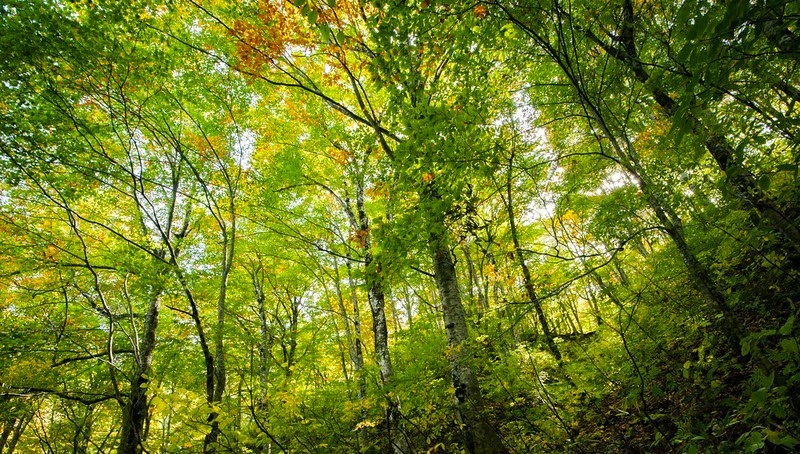Shirakami Sanchi in an extensive wilderness area of unspoiled virgin forest covering one third of Shirakami mountain range that straddles the border between Aomori and Akita prefectures in the northern Tohoku Region of Japan. It is one of the last natural beech forests left in East Asia, a remnant of forests that have covered the hills and mountain slopes of northern Japan since eight to twelve thousand years ago. Because beech trees are usually unsuitable for cultivation of the Shiitake mushroom, these forests have never been disturbed by Shiitake farmers. Untouched by human hands, these beech forest remain in a state of preservation which is much greater than that of surrounding forests.

Beech forests are originally thought to have flourished in the circumpolar regions prior to the Last Glacial Stage. As the glaciers advanced, the forests shifted their distribution to the south, but in many places mountainous areas stretching east to west blocked the shifts and the vegetation underwent simplification to survive. In doing so, the original beeches lost much of their ecological diversity. However, in Japan, the vegetation managed to retreat to the south maintaining the original diversity because continental glaciation did not occur there. As the glaciers retreated, the beech forests returned. Today, the beech forests of Shirakami Sanchi is the last and best relic of the cool-temperate beech forests that once covered northern hemisphere.
The forests are also home to the rare Japanese black bear (a subspecies of the Asian black bear), as well as the Japanese serow and many species of birds and insects.
The region remains protected and restricted to tourists. A 6,800 ha buffer zone surrounds the core property within which no human activities are allowed. There are no roads, foot-paths or man made structures within the site, but there are a few hiking trails that lead through the forests to waterfalls, mountain peaks and lakes in the buffer zone.
Sources: Wikipedia / UNESCO / Japan National Tourism















Comments
Post a Comment